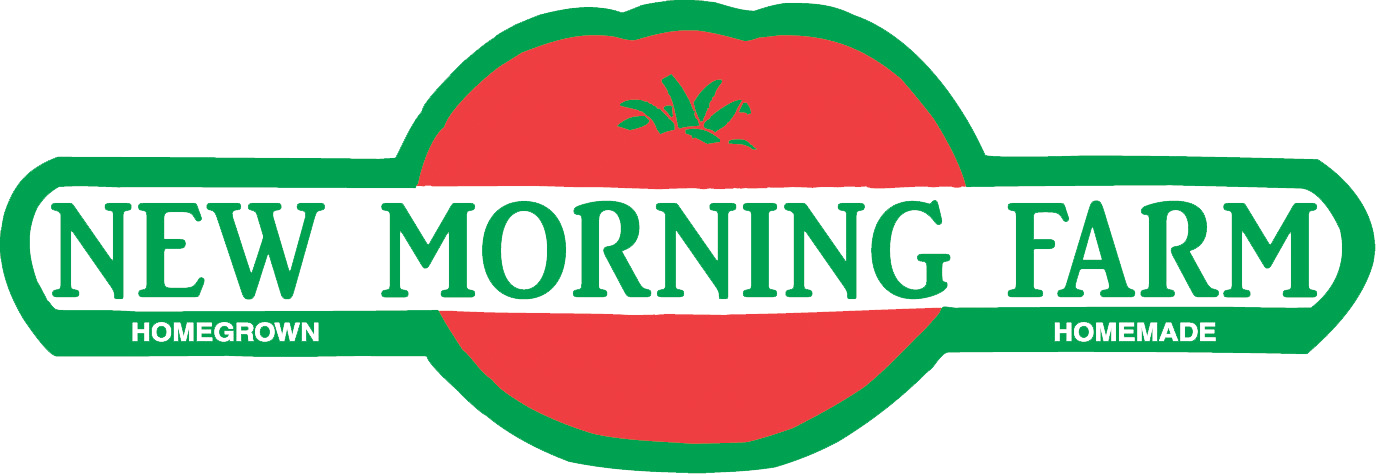How to be a crop manager
New Morning Farm Crop Managers’ Tasks
Crop Monitoring
You should be the one most informed about the current status of your crop. You will make the biggest difference in the success or failure of your crop. This means COORDINATING with many people - crew leaders for scheduling workers, mentors for guidance, field manager for planting schedules/locations, pest control manager for pest and disease scouting, irrigation managers for soil moisture, cultivators for weed control. Refer to your mentor first, then to the crop folders for insight gained from previous crop managers, and TAKE NOTES and add them to the folder through out the season/end of the year. Find out who will be your mentor and ask for their guidance, regularly. When you have questions, ASK - managing a crop is intensive. We expect that you will be the advocate in management of your crop, but we don’t expect that you will know everything you need to know at any given time. We do expect you to ask questions.
Find out the location of each planting of your crop and monitor it while it’s growing in the field. You should physically go and look at your crops several times a week, especially right after they have been transplanted/or have germinated and near/during harvest. Look at the entire stand of a crop, not just in one place. Bring samples back to your mentor! Things to look for:
Germination: Is it a good stand? If the crop was transplanted, are there any signs of shock? Were transplants adequately watered in?
Weed pressure: If you notice weed pressure, talk with your mentor to determine if it is significant enough to potentially compete with the crop, check in with the weed czar to plan next steps.
Pest problems: Crops are especially vulnerable when they are small. Look for holes in the leaves, bugs, leaves entirely bitten off by a larger animal, etc. Let your mentor and pest control manager know IMMEDIATELY if you see a problem. ASK FOR GUIDANCE about what to look for - the faster we deal with a problem, the less damage will be done overall.
Plant growth: How do plants generally look? Are they healthy? Yellowed? Are they flowering or starting to fruit? How is the fruit developing? (Ex. Is the basil starting to flower? It’s time to top it.) How are the roots?(perhaps pull a plant and check) Take samples back to your mentor and others.
Schedule and lead special practices in the field: At times, it will be necessary for the crop manager to do something to the crop, such as pulling flower stalks off rhubarb, topping Brussels sprouts, covering/uncovering cucumbers with rowcover, etc. Learn and know the specific procedures for your crops and schedule with the crew leader when things need to get done. Talk with your mentor about how to predict the timing of these events.
Variety differences: Take special note of differences between varieties of your crop. Is one more disease/pest resistant? Does one yield more and better quality too? Etc.
Soil Moisture: Different crops have different water needs depending on where they are in their life cycle. Know what these are and stick your hand in the dirt to feel what’s going on. Coordinate with irrigation managers to get their perspective and if you notice patterns/changes in your crop.
Projections and Inventories: Use your mentors!
Check field conditions. How is the crop growing? Monitoring the weekly growth of a crop will help you estimate when the crop will be of harvestable maturity. However, SEASONAL and CLIMATIC DIFFERENCES will impact how fast your crop will grow or ripen.
Set timing of harvest. When will the crop be ready to pick and when will it get sold? Harvest plans should include market plans. When will other generations of the same crop be ready to pick? Will waiting to harvest something cause a glut down the line? Do we have the crop in storage, should we postpone harvesting if possible? If you are harvesting for wholesale, what are wholesale standards for the crop? What are market standards for the crop?
Estimate harvest amounts. This is quite tricky and can be tough to hit right on, estimating harvest amounts are difficult. First you should look at the entire stand of a crop; will all parts of the stand yield an equal amount, or are there places where the crop is thin or has been damaged? It can be helpful to divide a stand into segments, estimate how much will be harvested from a segment, and extrapolate from that. Try picking a small amount of the crop to get a feel for how much it takes to fill a box. What is the weather going to be like? Cloudy, cooler weather means slower growth, while hot weather means the opposite. Keep in mind quality standards and “the cull factor” when estimating harvest amounts - a portion will invariably be tossed out.
Projections. Estimating harvest amounts leads to projecting how much of a crop will be available for market and/or wholesale. Each crop manager is responsible for making projections and submitting them to Jenni and the Produce Manager (Shirley). Don’t make Shirley come find you or make your projections for you!!! You can update projections later (and should IMMEDIATELY if there are any severe changes. e.g. the deer ate half the lettuce last night), but it is essential to give your customers a general idea of what you have to offer. When projecting, always factor in what will be needed for markets, then perhaps consider wholesale. WE SATISFY MARKET NEEDS FIRST. Any wholesale offers are secondary to retail market demand.
Record quantity harvested. Keep a record of amount harvested throughout the season. This information is needed for market planning and yield information. Having this data will also make estimating harvest amounts easier and more accurate.
Keep track of storage amounts. Crop managers should know how much of each of their crops is in the cooler at any given time. This includes evaluating and factoring in usable returns from markets. Make a plan for sale of all produce in inventory.
Report to the Produce Manager. Shirley will communicate with all our collaborating growers and wholesale customers. If you need to update or change a projection or offer, tell Shirley immediately. The sooner she knows, the more likely she can sell more produce or supplement our supply with produce from our collaborating growers. Work with the Assistant Produce Manager to keep crops organized in coolers. This means rotating your crop so that the older dates will be in front/used first. The coolers are in a constant state of dynamic chaos, and we want to work together to keep everything flowing easily and efficiently. ASK if you are not sure where your crop is or where you should put it today.
Harvest Management
Determine the Amount of crop to be harvested and how we Plan to Sell it, PRIOR to harvest day.(10+ day plans) On Thursdays in your weekly plan, give the crew leader a list of your harvests for the coming week - and include what day, how many people, and how many hours you think you will need. This means checking the coolers for any existing inventory, adding up what you will need for markets based on RMI amounts, and any other sales that you will make. Scheduling an appropriate harvest day means making sure that you will have the correct amount of inventory in the cooler throughout the week for pack out for markets. Work with the mentor, produce manager, and crew leader to narrow down a harvest window.
Organize and Gather harvest equipment. Everything needed for harvest should be ready to go BEFORE the crew is ready. Collect boxes, liners, bags, labels, twist ties, rubber bands, labels, knives, shovels, etc., from the harvest station in the packing shed. Always have extra supplies/boxes. Use a pallet(s) on the truck to unload the harvest easily. You may need stickers or labels for crops that are packed in the field (e.g., different varieties of kale).
Organize harvest crew. Determine the best number of people to harvest most efficiently and tell the crew leader via your plan and updates. Give clear harvest instructions to the crew before starting and when additional help arrives: Demonstrate technique, set harvest pace, show examples of size and quality standards.
Check the crew’s technique and give feedback/thanks/encouragement. Make sure everyone is doing a thorough job, and especially that we’re not missing good produce. Check that the crew is using tools effectively. Make sure the process is operating efficiently: no one should be standing around waiting to do their part. You may need to readjust roles (ex. You may need to have two people pulling beets and one boxing them, rather than the other way around).
Unloading and storage. The crop manager alone should unload crops and put in the appropriate cooler. Load your vehicle to allow for efficient unloading. Do not have the entire crew walk in and out of the packing shed carrying boxes. This only results in chaos and people standing around. If necessary, choose appropriate number of people to help. Complete harvest log and communicate the harvest updates to Shirley, mentor, crewleader etc.
Use crop cost worksheets, benchmarks and goals. Do at least one of these evaluations every time you harvest, aim for the full cost worksheet at least 3-5 times during the season per process (e.g. transplanting, picking, bunching, etc.). This is also vital for comparing the efficiency of different techniques, varieties, and if you’re testing improvements.
Quality Control
Keep all farm records: RMI, Harvest logs, GAP logs, Labels etc.
Supervise harvest quality.
Monitor handling and storage. Make sure crops are being picked and packed without being damaged. Ensure crop is handled correctly post-harvest - cooled as fast as possible and appropriately, stored in the correct cooler, etc.
Maintain quality in storage. Don’t let it dehydrate!
Rotate items in storage.
Apply standards. Ensure crops meet size and weight standards and that the correct labeling and packing materials are used.
Record crop, date, and amount on labels. (hybrid julian date)
Crop Records/Information
Talk with your crop mentor.
Review your crop folder at the beginning of the season so that you understand what information you will need to keep track of. Gather and store more information in this folder (electronically and physically).
Know standards for the crop. (may vary market to market)
Talk with your crop mentor.
Seek out information about your crop. Ask your mentors, Jenni, and field manager for guidance. PSU, Cornell, and various other sources also have useful information. Go to market and see how customers interact with your crop! Everything we do is focused at our retail farm market sales.
Complete weekly crop reports. Forms will be provided for you to fill out. Ask for them if you don’t have any. Give these to mentors to help stimulate meaningful conversations/thoughts.
Compose end of season Crop Report(see prompt).
Again, talk with your crop mentor and with markets(Shirley, Jenni, and even market manangers).

